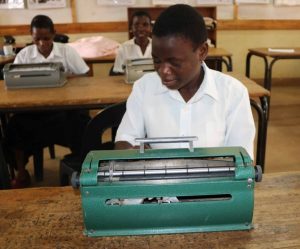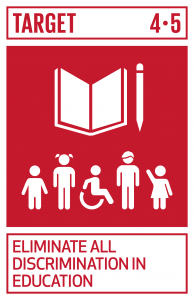
Overlooked Struggles of Children and Youth with Disabilities in Malawi—an UMODZI reflection & a call to action
“…For these children, accessing quality education is not just a struggle; it is a battle for dignity, hope, and a brighter future”
In Malawi, children with disabilities face significant barriers to education, with 44% of primary and 68% of secondary-aged children with disabilities out of school, compared to 13.2% and 21.6% of their non-disabled peers.
The promise of education remains out of reach for many children and youth with disabilities. They face monumental challenges every day—challenges that most of us can barely imagine. For these children, accessing quality education is not just a struggle; it is a battle for dignity, hope, and a brighter future.
Imagine walking miles to reach a school, only to find classrooms without wheelchair ramps, inaccessible toilets, and teachers who are not well-trained to understand one’s unique needs. Picture trying to learn without tools like a Braille machine or hearing aids while your peers move ahead without you. This is the harsh reality for tens of thousands of children in Malawi living with disabilities.

“I want to be a journalist”-Victor (real name withheld), a student at Chilanga School for the Blind. For many, this is an unattainable dream, but with the right tools and resources, Victor’s future can be bright.
Key Challenges
Lack of Accessible Infrastructure: Most schools lack ramps, wheelchair-friendly classrooms, or accessible toilets, forcing children with disabilities to drop out or stay home.
Shortage of Assistive Devices: Braille machines, talking calculators, hearing aids, and other critical learning tools are almost nonexistent in many schools.
Untrained Teachers: Many educators are unprepared to support children with disabilities, leaving these learners behind academically and emotionally. This forces many to resort to special needs schools, which are few in the country.
Deep Social Stigma: Families often face shame and exclusion, further discouraging children with disabilities from attending school.
Overwhelming Poverty: For many families, the cost of even the most basic supportive devices—like a walking cane or a pair of hearing aids—is insurmountable.
These barriers create a vicious cycle. Without education, these children are denied an important social mobility opportunity. Therefore, may not be able to contribute meaningfully to their well-being and the wider society. They are, in essence, locked out of hope and the future.
The Cost of Exclusion
The consequences of this neglect are devastating—not just for these children but for the entire nation of Malawi. Without access to education,
Many of these children are trapped in poverty for life, unable to find meaningful work or economic independence.
The country loses the incredible potential of their talents, perspectives, and innovations.
Entire families face more significant financial strain as caregivers must forgo employment to provide full-time care.
Education is more than a human right; it is a lifeline. Yet, for children and youth with disabilities, that lifeline is being severed every day.
Malawi’s Efforts to Bridge the Gap
The Malawi government addresses these inequities by aligning its policies with international frameworks like the UN Convention on the Rights of Persons with Disabilities (UNCRPD) and the Sustainable Development Goals (SDGs). Initiatives such as the National Inclusive Education Strategy have laid a foundation for progress. However, the harsh truth remains: policy alone is not enough. Chronic underfunding, inadequate infrastructure, and a severe shortage of resources mean that these initiatives are rendered futile as they struggle to create meaningful change. Schools are ill-equipped, teachers are untrained, and assistive devices are scarce.

“SDG 4—Quality education begins with inclusion”
The Dire Need for Support
To truly transform education for children with disabilities, there is an urgent need for:
Assistive Devices: Tools like Braille machines, talking calculators, hearing aids, and speech mirrors are essential to enable learning.
Accessible Infrastructure: Classrooms, toilets, and playgrounds must be designed to accommodate every child, regardless of their abilities.
Learning Materials: Items like bold-line exercise books, tactile maps, and large-print textbooks are critical for children with visual and physical impairments.
Technology: Tablets, laptops, projectors, and desktop computers are vital for modern, inclusive learning.
Teacher Training: Empowering teachers with the skills and knowledge to support diverse learners would make classrooms more inclusive and effective.
